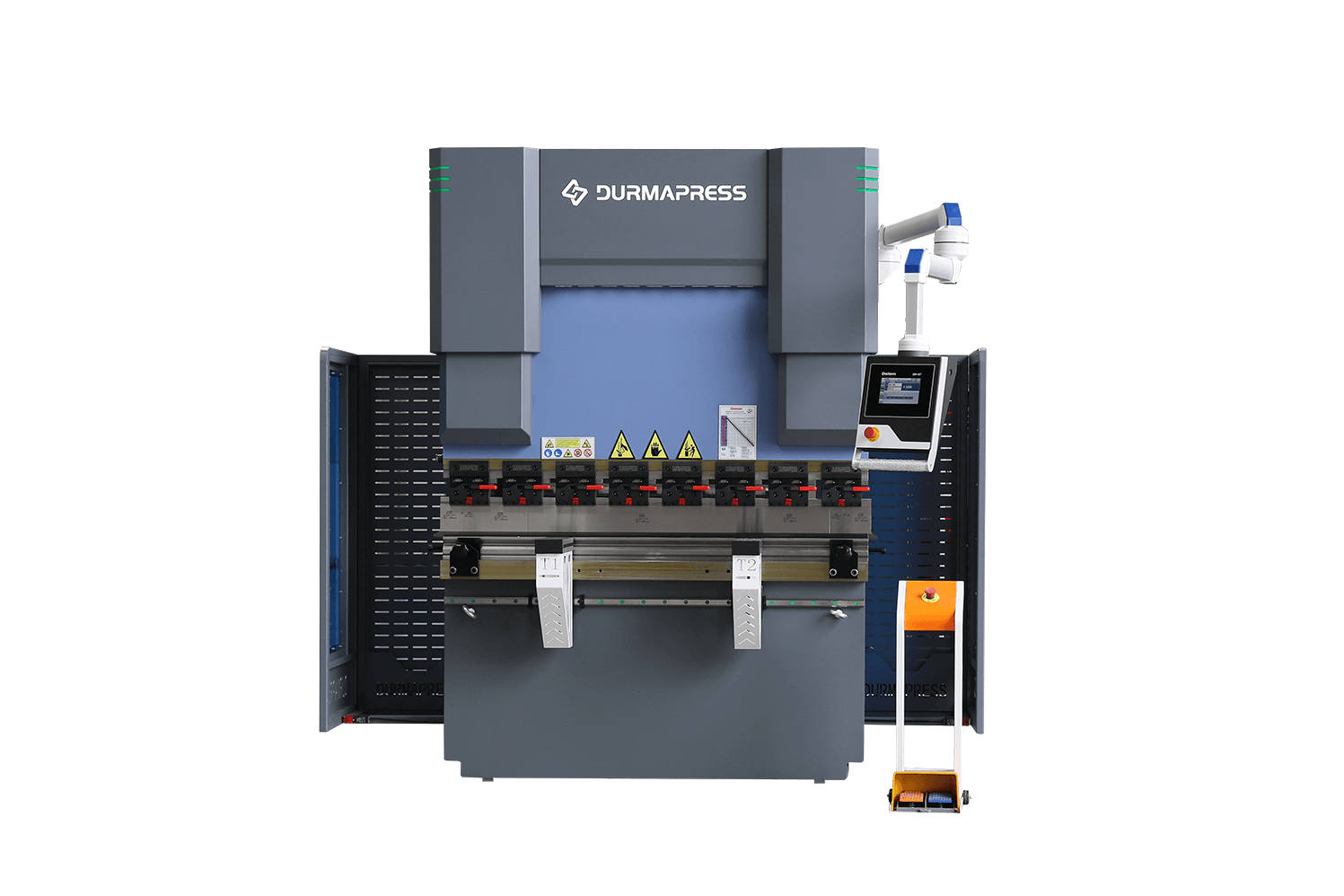Você pergunta, nós respondemos
Se tiver mais perguntas, contacte-nos e responderemos no prazo de 24 horas.
- Material (por exemplo, aço macio, aço inoxidável, alumínio e ect)
- Espessura (por exemplo, 4 mm, 6 mm e mais)
- Comprimento de trabalho (por exemplo, 12 pés, 3100 mm ou 100 polegadas e ect)
- A resistência à tração do material (por exemplo, 450Mpa, 350Mpa e ect)
- Há uma grande diferença entre os freios de prensa hidráulicos da barra de torção NC (freios de prensa manuais desatualizados) e a máquina de freio de prensa servo CNC eletro-hidráulica, o primeiro é o uso do eixo de torção conectado ao pêndulo esquerdo e direito, etc., a formação do mecanismo de sincronização forçada do eixo de torção em dois cilindros hidráulicos sincronizados para cima e para baixo para manter a sincronização; e o último é o uso de servo-válvula eletro-hidráulica proporcional e outros sistemas de controle hidráulico e escala para formar um controle de malha fechada. Ou seja, o freio de prensa NC de barra de torção no método de sincronização mecânica e a sincronização eletro-hidráulica é um método de sincronização de válvula servo-proporcional.
- O corpo da prensa CNC de barra de torção é maquinado com uma precisão relativamente baixa, pelo que é completamente incapaz de satisfazer os requisitos de precisão da válvula servo-proporcional electro-hidráulica.
- Se você quiser converter o freio de imprensa NC da barra de torção em uma máquina de freio de imprensa CNC deve adicionar servo-válvula proporcional, escala, controlador CNC eletro-hidráulico e possivelmente adicionar sistema de backguage de precisão; ao mesmo tempo, também remova o eixo de equilíbrio da máquina de dobragem de eixo torcido, válvula hidráulica, sistema hidráulico e outros componentes, não apenas uma carga de trabalho muito grande, mas também terá um grande custo operacional. Portanto, se quiser conhecer o seu futuro desenvolvimento de negócios, escolher os melhores freios de imprensa será mais brilhante.
- Ligar a alimentação, ligar o interrutor de chave no painel de controlo e, em seguida, premir a bomba de óleo para arrancar.
- Ajuste do curso, os freios de prensa devem prestar atenção para ajustar o curso, antes de dobrar a chapa metálica deve ser testado. A máquina de prensagem de travões no ponto de descida da matriz para o fundo deve garantir que existe uma folga na espessura da chapa. Caso contrário, o molde do travão de pressão será danificado. O ajuste do curso é também um ajuste rápido elétrico e um ajuste fino manual.
- Seleção do tamanho V das ferramentas de dobragem (matriz), geralmente para escolher a espessura da placa de 8 vezes o tamanho V da ranhura. Por exemplo, para dobrar uma chapa de 4 mm, é necessário escolher uma matriz em V de cerca de 32 mm.
- O ajuste do medidor traseiro é geralmente o ajuste do controlo CNC e o ajuste manual. O medidor traseiro frontal e o eixo X chamado traseiro podem ser controlados pelos controladores NC e CNC.
- Pressione o interrutor de pé para começar a dobrar, o freio de imprensa e a máquina de corte são diferentes, podem ser liberados a qualquer momento, solte o freio de imprensa do pé irá parar e, em seguida, avance para continuar na linha.
A conceção das ferramentas de prensagem depende da peça de trabalho do cliente, podendo ser dividida em seleção de punções e seleção de matrizes. As regras são as seguintes:
Seleção de perfuração :
- Quando a perna pequena de cima é mais comprida do que a perna de baixo, é necessário um punção de pescoço de ganso.
- Quando a perna pequena de cima é mais curta do que a perna de baixo, qualquer forma de punção serve.
- Quando a perna pequena de cima é igual à perna de baixo, é necessário um punção agudo deslocado.
Seleção de ferramentas:
O cliente pode utilizar a regra normal 8×2 para guardar o burget.
- Em primeiro lugar, determine a gama de espessuras de chapa metálica que pretende dobrar. Por exemplo, pode ser necessário dobrar material de 2 mm a V=16 mm Matriz
- Em segundo lugar, avalie o conjunto de matrizes mais pequeno necessário multiplicando o metal mais fino por 8. Neste caso, o material de 3 mm necessitaria da matriz mais pequena, portanto: 3 × 8 = 24mm, o que O tamanho do Die Set V arredonda para 24mm.
- Em terceiro lugar, avaliar o maior tamanho do conjunto de matrizes V necessário, multiplicando o metal mais espesso por 8. Neste caso, o material mais espesso de 6 mm necessitaria da maior matriz: 6× 8 = 48 mm.
Já determinou o molde mais pequeno e o maior de que necessita - 2 mm e 6 mm. Para preencher o que precisa no meio, começa com o tamanho V mais pequeno e duplica o seu tamanho. Neste caso, isso dá-lhe um molde de 16 mm (2 × 8 = 4). Molde Multi-V de 32mm , 48mm .
Se a sua peça não necessita de uma flange curta, de um desvio estreito ou de um raio apertado, porquê complicar as coisas? Siga estas três regras simples e melhorará o desempenho angular, encurtará o tempo de preparação e reduzirá os custos operacionais da ferramenta.
Também o engenheiro da Durmapress pode desenhar as ferramentas especiais de acordo com o pedido do produto do cliente, por isso basta contactar-nos e enviar os desenhos dos seus produtos.






